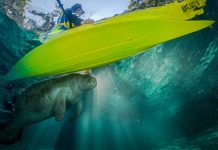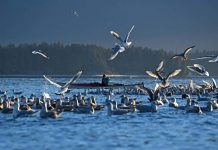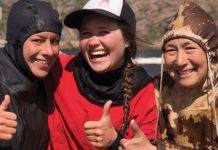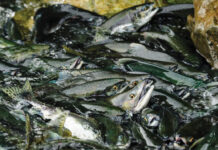Williamsport appears like a scene out of a post-apocalyptic movie, contrasted by the stunning natural surroundings. Four days into a 120-mile exploration of the roadless eastern shore of Newfoundland’s Northern Peninsula, we are growing accustomed to encountering abandoned coastal communities. Along with the icebergs carried south on the Labrador Current and the worn bald-rock mountains brooding over the sea, these forgotten settlements form a paddling experience that’s distinctly Newfoundland.
Setting out from Jackson’s Arm, we had forged our way north along Whites Bay, traveling deeply in and out of the fiords of Great Cat Arm and Great Harbour Deep in order to make camp. Fourché Harbour is the third fiord of our journey and we now know to expect a hard slog at the end of a long day of paddling, as westerly winds sweep squalls in all directions from the high surrounding land. Passing through the half-mile-wide entrance, we are surrounded by steep rock walls reaching up more than 1000 feet. Penetrating three miles into the Long Range Mountains, the fiord is a dramatic gash in the ancient rock armor of this northernmost extension of the Appalachian chain.
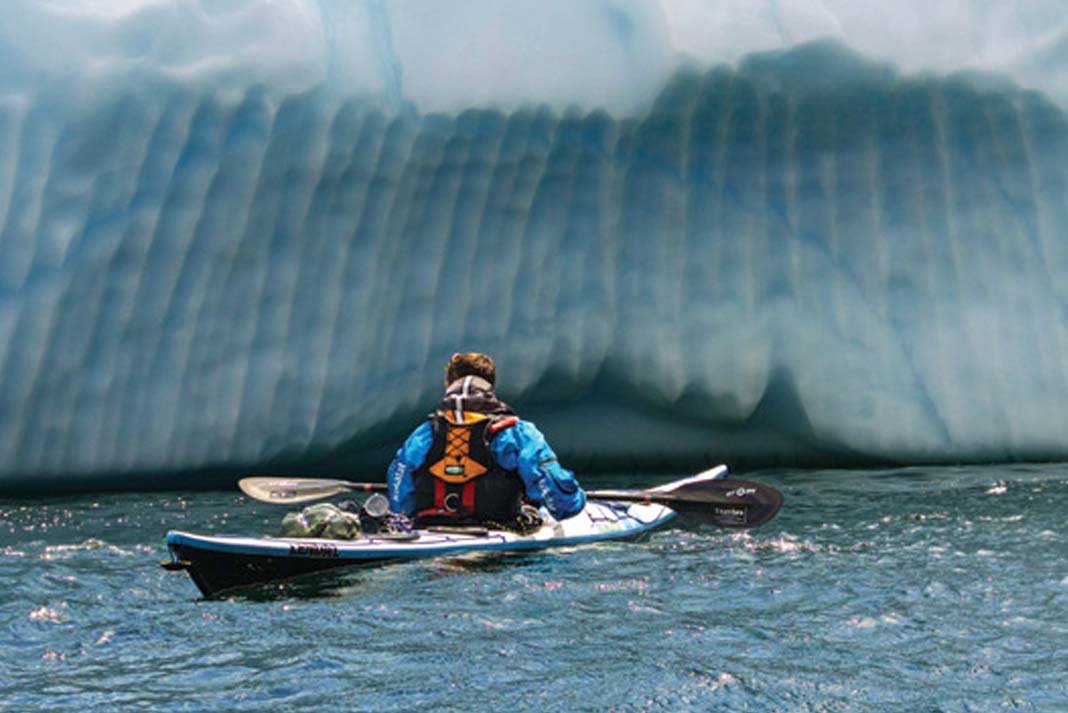
Williamsport emerges from the boreal forest on the north side of the fiord. The community was established at Northeast Cove for the dozens of families who worked at the whale processing plant, just a short row across the harbor. The ruins here make for a starkly different scene than the comparatively museum-like quality of the relocated community we’d toured at Great Harbour Deep. Eroding in silence, they illustrate the inevitable entropy awaiting all of Newfoundland’s coastal ghost towns.
As we round the final headland at Granite Point, the abandoned station materializes on the southern shore of the harbor. We make our camp on cracked concrete slabs amid the rusting remnants of the once bustling factory. After an evening meal of freshly caught cod—which, along with the whales, are returning to these waters after a long hiatus—we retire to our shelters.
Despite clear skies, the tents tremble under an unseen aerial assault. The community may be long gone, but Williamsport’s population of blackflies continues to thrive.
Christopher Lockyer and Peter Bojanic are returning this summer to paddle the rest of the Northern Peninsula’s eastern shore.
View an interactive route map with photos, video and information on paddling and camping the Great Northern Peninsula here.
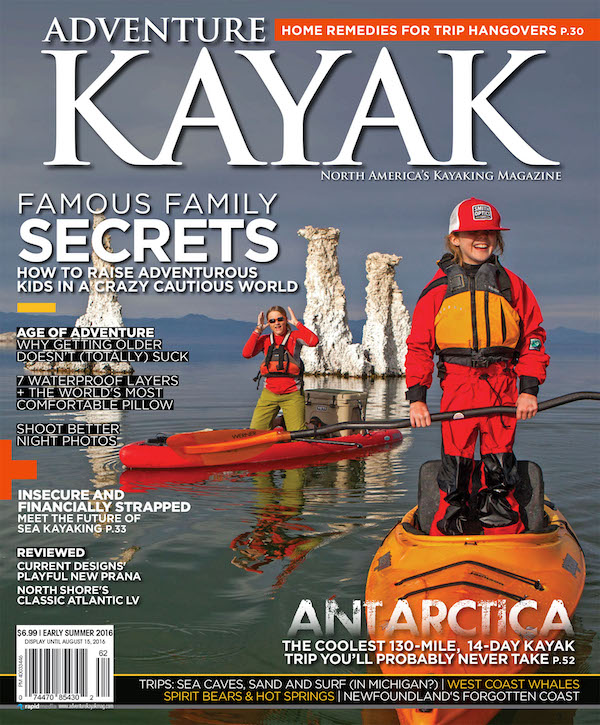 This article originally appeared in Adventure Kayak Early Summer 2016 issue.
This article originally appeared in Adventure Kayak Early Summer 2016 issue.
Subscribe to Paddling Magazine and get 25 years of digital magazine archives including our legacy titles: Rapid, Adventure Kayak and Canoeroots.



